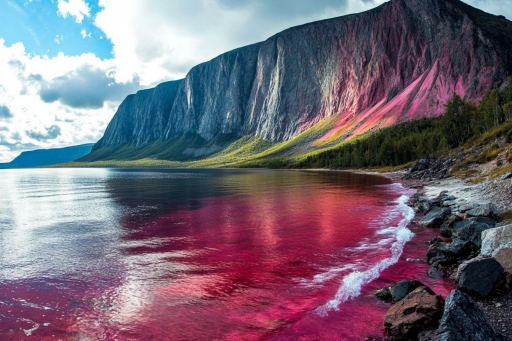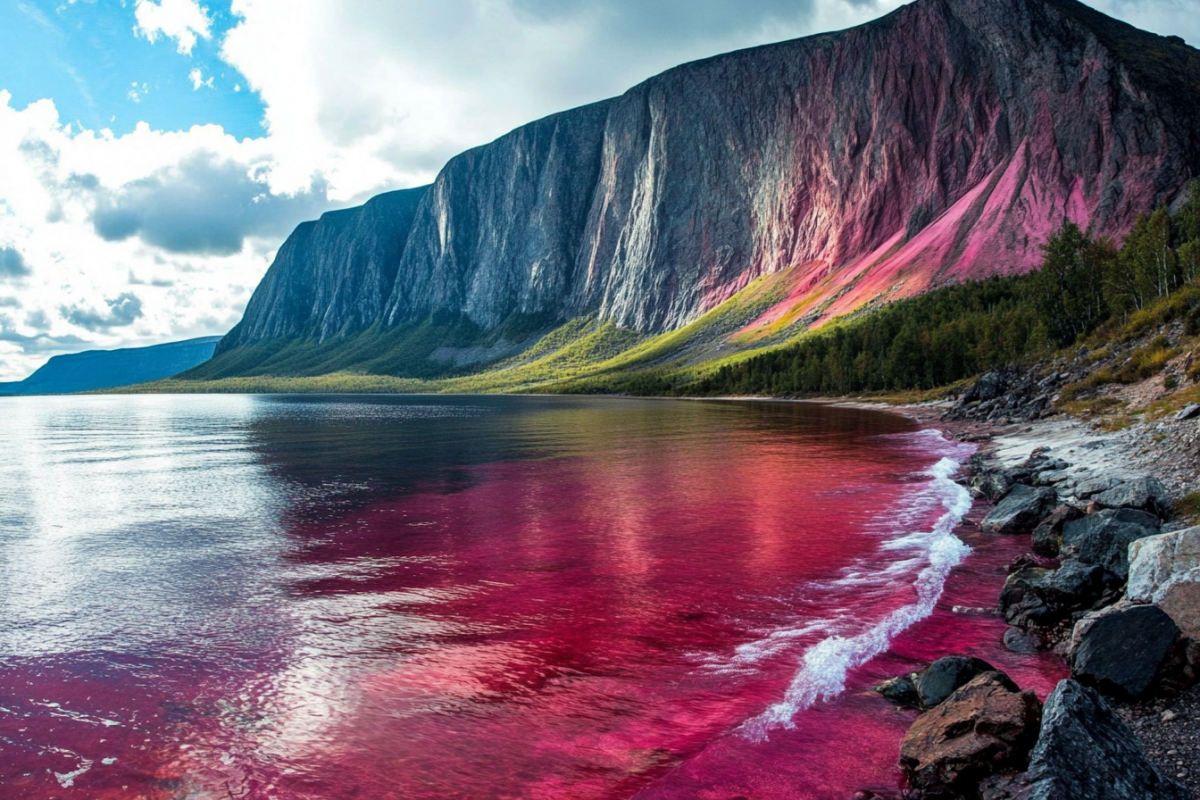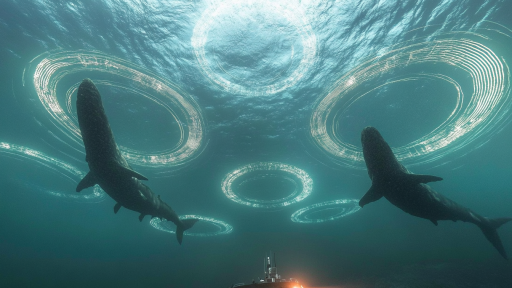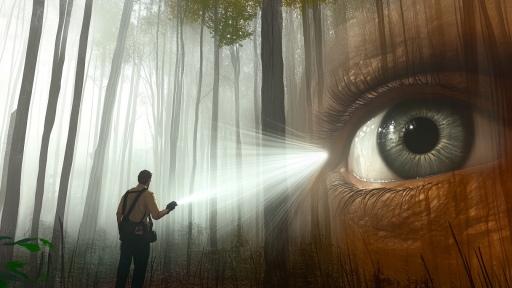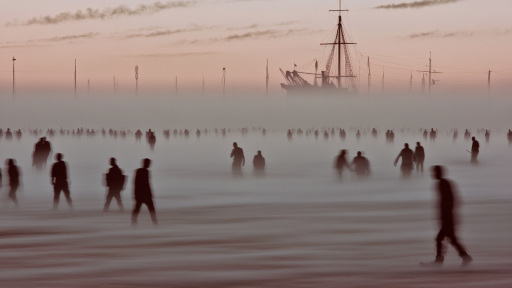
Nature has a way of defying expectations, creating things so bizarre they seem like something out of a sci-fi movie. From glowing caves to animals that look like living illusions, the natural world is full of jaw-dropping surprises. Whether through rare phenomena, unique adaptations, or optical tricks, these incredible sights are enough to make anyone question reality. Some of them are so strange, they’ll have you wondering—how can this even be real?
The Rainbow Mountains of China

In China’s Zhangye Danxia Landform Geological Park, the hills look as if they’ve been painted with a giant brush. Layers of mineral deposits and red sandstone have been compressed over millions of years, creating a natural rainbow that stretches across the landscape. The surreal colors appear almost too vivid to be real, yet no filters or special effects are involved. It’s as if nature decided to experiment with its own version of Photoshop.
The Bioluminescent Shores of Vaadhoo

At night, the beaches of Vaadhoo Island in the Maldives glow an eerie blue, as if tiny stars have fallen into the water. This phenomenon is caused by bioluminescent plankton that light up when disturbed, turning the waves into a shimmering, otherworldly spectacle. The effect is so stunning that it looks like something straight out of a fantasy movie. But this glowing ocean is completely natural—just one of nature’s many magical tricks.
The Walking Trees of Ecuador
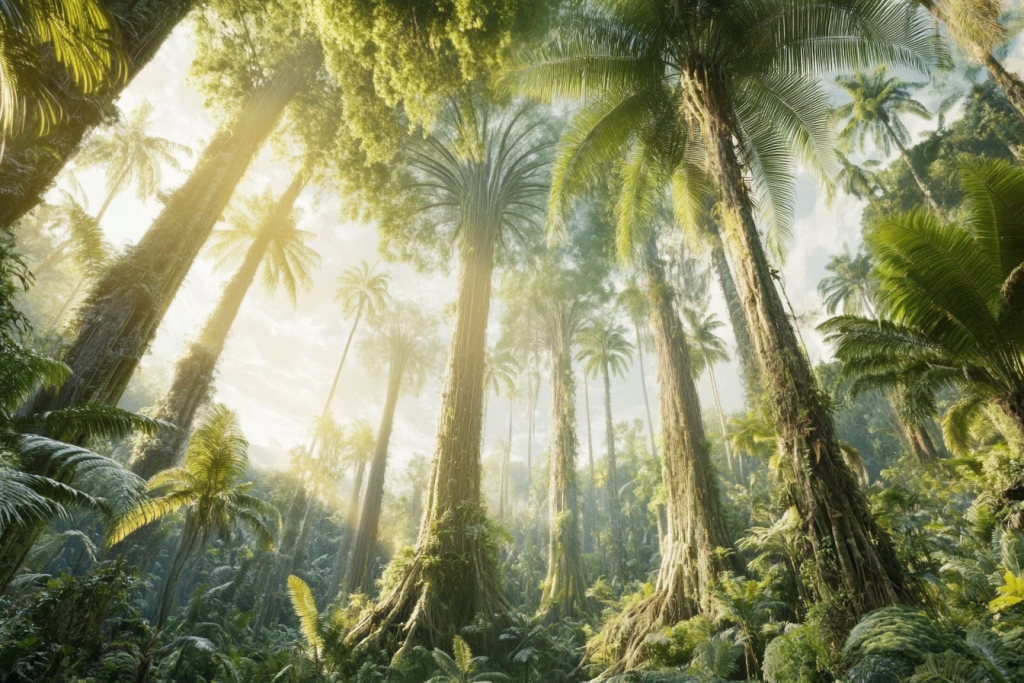
Deep in the Amazon rainforest, there are trees that can move. The Socratea exorrhiza, also known as the “walking palm,” appears to shift locations by growing new roots toward sunlight and slowly abandoning its old ones. While the movement isn’t fast enough to see in real time, researchers have debated whether these trees actually “walk” several feet over years. It sounds like something out of a myth, but some scientists believe these trees really do migrate.
The Lake That Turns Animals to Stone

In Tanzania, Lake Natron looks like an ordinary body of water—until you see the eerie statues resting on its shores. The lake’s extreme alkalinity, caused by volcanic minerals, preserves and calcifies animals that come into contact with it, giving them a ghostly, stone-like appearance. Birds, bats, and other creatures that touch the water are often found frozen in time, as if transformed by a sorcerer’s spell. It’s a haunting yet entirely natural phenomenon.
The Frozen Methane Bubbles of Abraham Lake

Beneath the ice of Abraham Lake in Canada, frozen orbs of white appear suspended in time. These bubbles are made of methane gas, released by decaying plants at the bottom of the lake and trapped as the surface freezes. The result is an eerie, alien-looking pattern of stacked, milky-white spheres under the ice. But beware—if the ice cracks, these bubbles release flammable methane into the air, making the lake as dangerous as it is beautiful.
The Glowing Underground of Waitomo Caves

Deep in the caves of New Zealand, thousands of tiny blue lights glow like a starry night sky. But these lights aren’t from the heavens—they come from glowworms hanging from the cave ceilings, using their bioluminescence to attract prey. The effect is mesmerizing, turning the caverns into an underground galaxy. This natural spectacle is so surreal, it looks like an enchanted cave straight out of folklore.
The Blood Falls of Antarctica

In the icy wilderness of Antarctica, a crimson waterfall pours from a glacier, looking like something from a horror film. The red color comes from iron-rich saltwater trapped beneath the ice, which oxidizes when exposed to air, creating the illusion of blood seeping from the glacier. Though it appears nightmarish, this chilling phenomenon is just another example of nature’s ability to create something unbelievably strange.
The Glass-Like Frogs of the Amazon

The glass frog is a real-life illusion, its skin so translucent that you can see its internal organs. Found in the Amazon rainforest, this tiny amphibian blends into its surroundings by making itself nearly invisible. Under the right lighting, its beating heart and digestive system can be seen through its skin, as if it were a creature from a sci-fi experiment. It’s the closest thing nature has to a living ghost.
The Square Waves of the Ocean

Off the coast of France’s Île de Ré, the ocean sometimes forms a bizarre grid pattern, with waves intersecting at perfect right angles. This phenomenon, called a “cross sea,” happens when two wave systems moving in different directions collide. The effect is hypnotic, creating an optical illusion of a massive chessboard stretching across the sea. As mesmerizing as it looks, sailors know to avoid it—these waves can create powerful and dangerous currents.
The Living Rocks of Chile

At first glance, Pyura chilensis looks like an ordinary rock. But when cut open, this bizarre sea creature reveals bright red, blood-like insides. Found along the coast of Chile and Peru, these “living rocks” are actually marine animals with no visible organs, feeding by filtering water through their porous bodies. They remain anchored to one spot for life, making them one of nature’s strangest disguises.
The Siberian Sinkholes That Appear Out of Nowhere

In remote Siberia, massive craters have been mysteriously appearing in the tundra. These giant holes, some as deep as 200 feet, seem to form overnight, baffling scientists. The leading theory is that underground methane gas builds up and suddenly erupts, blowing massive chunks of earth away. Whether from climate change or something else, these craters look more like portals to another dimension than natural formations.
The Dragon’s Eye Cave of Croatia

Hidden in Croatia is a deep, perfectly round water cave known as the Dragon’s Eye. The eerie blue and green hues of the water shift depending on the light, making it look like a massive reptilian eye staring into the sky. Legends claim it’s the resting place of an ancient sea creature, but science suggests it’s a unique mix of fresh and saltwater that creates the illusion. Either way, it looks like something straight out of a fantasy novel.
The Pink Lake of Australia

Lake Hillier in Australia is a shocking shade of bubblegum pink, looking more like a giant pool of strawberry milkshake than a natural lake. Unlike other colorful lakes, its color remains unchanged year-round, even when removed from the water. Scientists believe the hue comes from a specific type of salt-loving bacteria, but its exact cause is still debated. No filters needed—this is just nature’s way of showing off.
The Striped Icebergs of Antarctica

Icebergs are usually pure white, but every so often, nature creates a masterpiece of striped, multi-colored ice. These rare formations occur when ice layers freeze under different conditions, creating dazzling blue, green, yellow, and even black stripes. They look like abstract sculptures floating in the ocean, each one a frozen canvas of nature’s artistic expression.
The Ever-Burning Gates of Hell

Deep in the Karakum Desert of Turkmenistan, a fiery crater known as the “Door to Hell” has been burning for decades. This massive pit of flames was created when a Soviet drilling operation accidentally tapped into a cavern filled with natural gas, igniting a fire that still burns today. The sight of endless flames rising from the earth looks like a portal to another world, making it one of nature’s most surreal and unrelenting spectacles. Despite attempts to extinguish it, the fire refuses to die, feeding the illusion that it was never meant to be put out.
Are We Living in Nature’s Illusion?

With so many strange sights hidden across the planet, it’s easy to forget that nature doesn’t need special effects—it creates its own. From glowing seas to moving trees, the world constantly reminds us that reality is often stranger than fiction. Are these bizarre creations just rare accidents, or does nature have a sense of humor? Perhaps the weirdest thing of all is that we still haven’t seen everything it has to offer.

